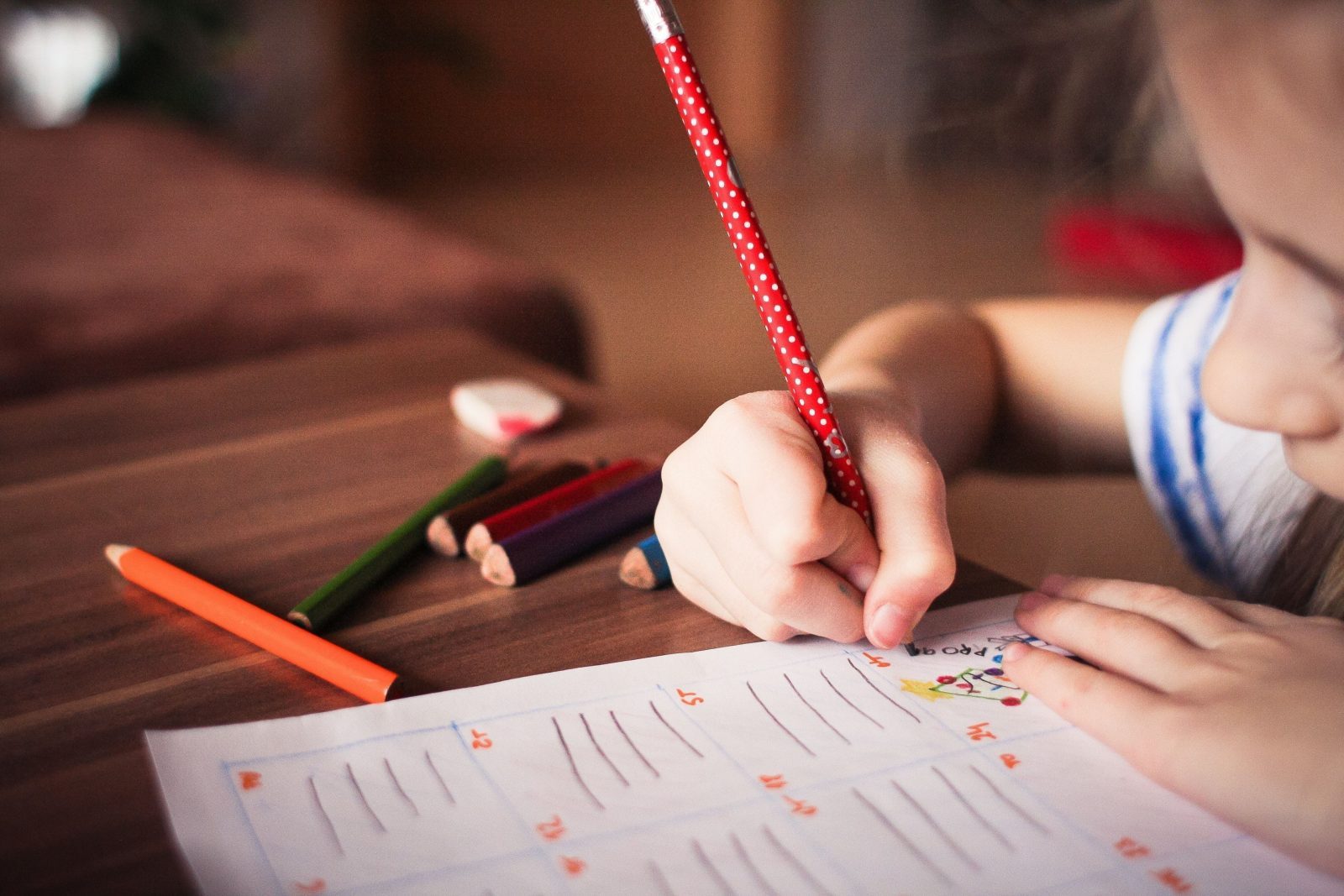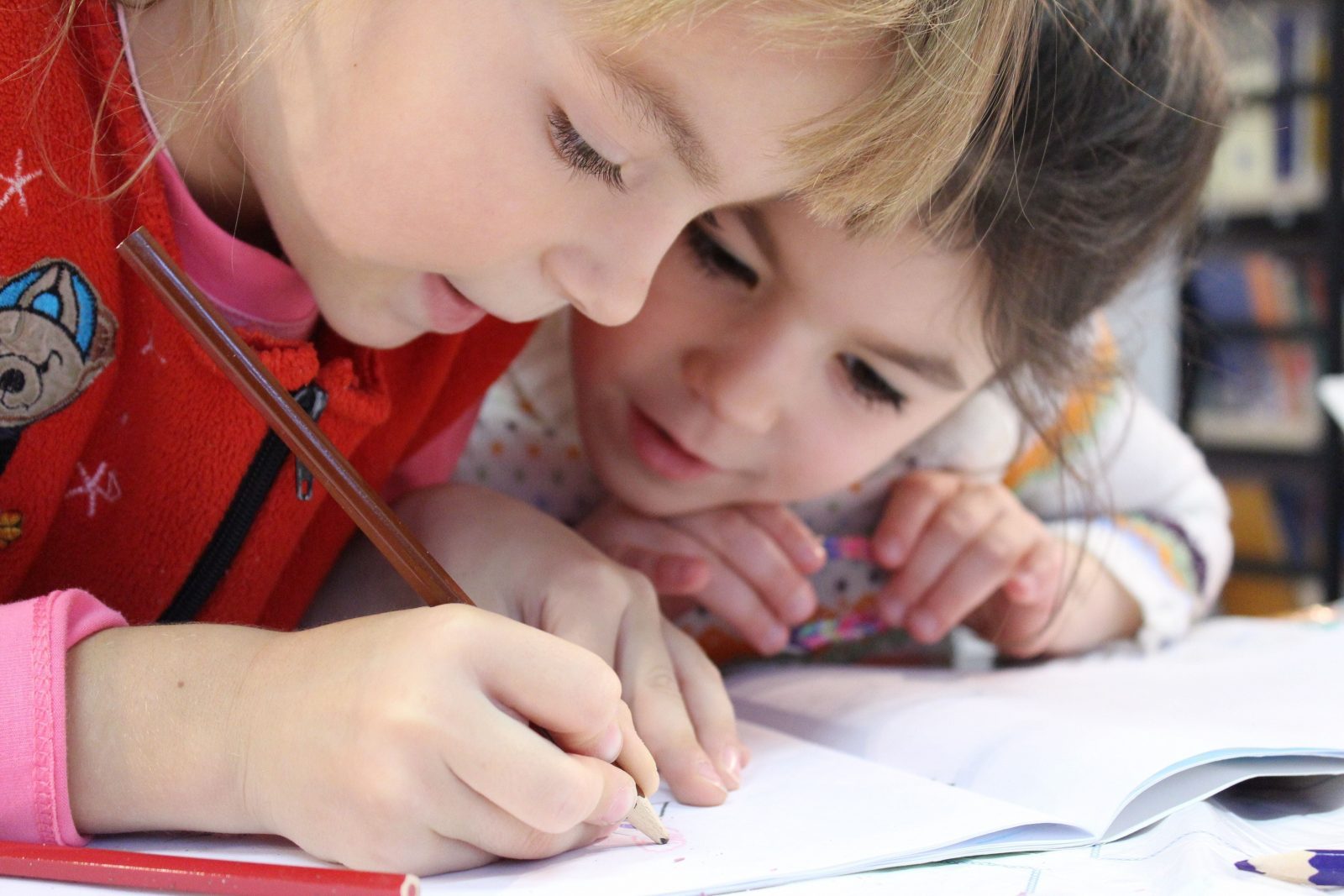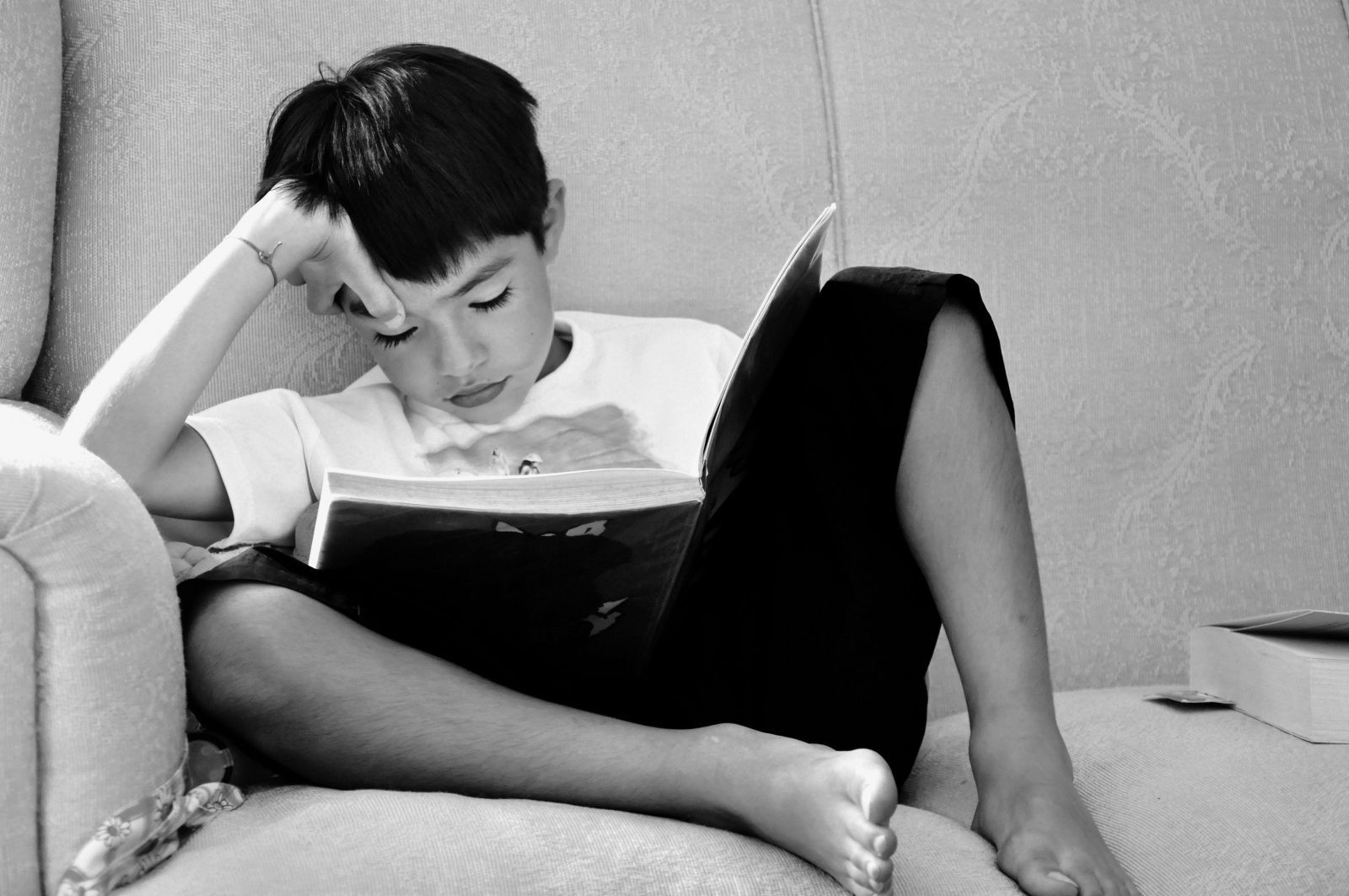
What is Language Acquisition Theory? 3 Top Theories of How We Learn to Communicate
Language is what makes us human- it’s what sets us apart from so much of the animal kingdom. But how do we acquire language? What is language acquisition theory, what are the stages of learning a language, and what neurocognitive research is available on language acquisition theory?
How does language work in the brain? How do our brains develop a second language or sign language? How does artificial intelligence develop language abilities? How can you help your child improve language acquisition?

What is Language Acquisition Theory?
Language acquisition is the process by which we are able to develop and learn a language. This generally includes speaking, listening, writing, and overall communication. Our ability to acquire language is a uniquely human trait because although bonobos, a species of primate, can produce vocalizations with meaning, birds can produce songs, and whales have their own version of a language, no species on Earth that we know of can express an unlimited amount of abstract ideas with a limited set of symbols (gestures, words, and sounds).
The term language acquisition often refers to the first-language acquisition, which simply means that it’s the first language learned as an infant (unless the child learns two or more languages at the same time). However, there is also the term second-language acquisition, which refers to the process in both children and adults when they learn additional languages apart from their native one. Each of these terms has at least one language acquisition theory behind them which seeks to answer the big question of “how do we learn a language?”
The History of Language Acquisition Theory
As with much of history, it all begins with some philosophers in ancient societies who were interested in how the world worked—in this case, how humans were able to develop language.
Using “armchair psychology” (sitting and thinking about the problem), these philosophers came to the conclusion that we were able to learn languages due to the subset of a human’s ability to gain knowledge and learn concepts. They believed that language was an innate ability that we were born with. Plato, for example, felt that word-meaning mapping was also innate in one way or another.
Scholars who studied Sanskrit—an ancient language used over 3,000 years ago in what is now India—debated for over 12 centuries about whether or not a human’s ability to recognize and use the correct meaning of words in Sanskrit was something passed down by generations and learned from pre-established conventions (for example, a child learns the word for horse because he hears older speakers talking about horses) or whether it was innate (“God-given”). Later, philosophers such as John Locke and Thomas Hobbes got in on the language party and argued that knowledge (and language, in Locke’s case) come from abstracted sense impressions. What does that mean? They argue that language comes from a sensory experience.
Behaviorists, people who believe that everything is acquired through conditioning, argued that language is learned through operant conditioning—a form of conditioning that happens through rewards and punishments, which makes someone associate between a particular behavior and its consequence. In essence, that a child learns that a specific combination of words or sounds stands for a specific concept or idea through successfully repeated associations.
For example, a child would learn that their house animal, Whiskers, is a cat while their other house animal, Fido, is a dog. He would do so because when the child would call Whiskers his dog, his parents would say that no, Whiskers is a cat, not a dog.
One of the leading proponents for this theory of language acquisition is B.F. Skinner, one of the founders of the Behaviorist movement.
However, Noam Chomsky, one of the world’s greatest linguists to date strongly criticized Skinner’s theory. Chomsky argued that kids often ignore their parents’ corrections and would not likely learn that actual, proper use of the word or phrase and end up using it incorrectly, by means of Skinner’s conditioning theory. Chomsky’s language acquisition theory involved a more mathematical approach to language development based on a syntax (the meaning of a word) study.
Learn about Dyslexia, a problem with language development.
3 Popular Language Acquisition Theories
Language acquisition theory: The Nativist Theory
One of the most well-known and most scientifically accurate theories yet, the Nativist Theory suggests that we are born with genes that allow us to learn language.
This language acquisition theory argues that there is a theoretical device known as the language acquisition device (LAD) that is somewhere in our brain. This “device” is in charge of our learning a language the same way the hypothalamus, for example, is in charge of regulating our body temperature.
This theory also suggests that there is a universal grammar (a theory by Noam Chomsky) that is shared across every language in the world because universal grammar is part of our genetic makeup. Essentially, almost all languages around the world all have nouns and verbs and similar ways to structure thoughts. All languages have a finite amount of rules from which we can build an infinite amount of phrases. The core concepts from these finite rules are built into our brains (according to Universal Grammar and the Nativist Theory).
This language acquisition theory explains well how humans seem to have a far more complicated and complex set of communication patterns than any other species in the world. It also is a working theory for how children are able to learn so quickly so many complicated ideas. This language acquisition theory is comparable to how we think of numbers—everyone in the world knows what “4 apples” look like regardless if we say that there are four, cuatro, vier, or dört apples.
Language acquisition theory: The Sociocultural Theory
The sociocultural theory, also known as the interactionist approach, takes ideas from both biology and sociology to interpret our language acquisition.
This language acquisition theory states that children are able to learn language out of a desire to communicate with their surrounding environment and world. Language thus is dependent upon and emerges from social interaction. The theory argues that due to our language developing out of a desire to communicate, our language is dependent upon whom we hang around and with whom we want to communicate.
Essentially, the theory says that our environment when we grow up has a heavy influence on how quickly and how well we learn to talk. For example, an infant who is raised by a single dad will develop the word “dada” or “baba” before developing “mama”.
Language acquisition theory: The Learning Theory
The learning theory is a language acquisition theory that looks at language learning as learning a new skill and that we learn language much in the same way that we learn how to count or how to tie shoes via repetition and reinforcement. When babies babble, adults coo and praise them for “talking” (and also because it’s pretty adorable).
When the kids grow older, they often are praised for speaking properly and corrected when they don’t. From this correction and praise comes the learning theory that language comes from stimulus and stimulus-response. However, this language acquisition theory, logical as it may be, fails to explain how new phrases and new words form since it’s all about repeating and mimicking what people hear from others.
Stages of Language Acquisition Theory
The first few years of a child’s life are critical for language learning. Between 10-18 months, a child will say their first words and before they reach two-years-old, they will be able to say some simple, short phrases (for example, “water, please”). Studies have shown that an 18-month old can actually tell the difference between correct verbs and incorrect verb pairs. For example, they should know that “is jumping” is correct while “will jumping” isn’t. Between the ages of four and seven, kids become more and more able to tell understandable stories. Normally, everyone goes through five stages of acquiring a language.

Stage 1- Pre-production
This first stage is also known as the silent period. Although a child may have up to 500 words in their receptive vocabulary (words they’ve learned from watching and listening as babies do), they aren’t able to speak yet. Some kids try to mimic and “parrot you” by repeating everything you say. However, they aren’t producing any real words yet. This is the stage when kids listen attentively and they respond to visual and auditory stimuli. They are able to understand and duplicate movements and gestures in order to show their comprehension. However, at this stage, repetition is critical for their phonemic awareness.
Stage 2- Early Production
Stage 2 can last up to six months. During this stage, kids will develop a vocabulary of about 1,000 words and can say one or two phrases. They use short bits of language that they have memorized, but these bits might not be used correctly.
Stage 3- Speech Emergence
In this stage, kids have about a 3,000-word vocabulary and can use simple sentences and phrases. They should be able to sound out stories phonetically and match vocabulary words to definitions. Kids are also able to ask simple questions such as “may I go to bathroom?”—though the grammar may not always be 100% correct.
Stage 4- Intermediate Fluency
Kids in Stage 4 have roughly 6,000 active words in their vocabulary. They are able to start using more complex sentences and should be able to express basic thoughts and opinions (both in speaking and writing). For English as a Second Language learners, this is the stage when the child begins to use strategies from their native language to learn content in English and may also translate assignments from their native language.
Stage 5- Advanced Fluency
It can take 4-10 years to achieve academic cognitive fluency for a second language learner. It also means that all language learners (native or not) are fluent (for their age) in this stage.
Language acquisition theory and the brain
There are as many as 50 regions in the brain that are involved in language from translating the vibrations in the air into neural activity so our brain can hear it to controlling the complex and complicated physical movements needed to produce speech and communicate to manipulating and using symbols to help make up ideas and thoughts.
Around the same time President Lincoln was giving his Gettysburg Address speech, the French neurologist, Pierre Paul Broca, found what is now called today as Broca’s Area—an area in the brain that handles language processing, speech production, comprehension, and controls facial functions. It’s located in the posterior frontal gyrus.
When damage occurs in Broca’s Area, the person will probably experience Broca’s Aphasia and have language issues. Pierre Paul Broca was the first person to associate the left brain hemisphere with language. The majority of us control our language via the left hemisphere except for 30% of left-handers and 10% of right-handers.
Behind Broca’s area is the Pars Triangularis which is involved in the semantics of a language. It’s used when you stop to think about what someone said—such as a complex sentence.
A few years after Broca, a German neurologist, Carl Wernicke, found the counterpart of Broca’s Area in the superior posterior temporal lobe—a place now known as Wernicke’s Area. This area handles the language that we hear and the process known as receptive language. Wernicke was the first person to map out the language process in the brain—cognition-to-speech, writing-to-reading, and speech-to-comprehension. It was later adopted by Norman Geschwind and is now a map known as the Wernicke-Geschwind model. However, it’s rather outdated by now.
The same man, Norman Geschwind, found in the 1960s that the inferior parietal lobule is important in language processing. This is the part of the brain that is all about language development and acquisition as well as the abstract use of language. It’s the place in the brain where we collect and consider written and spoken words, phrases, and ideas.
It’s such a complex area and process that it’s where we not only are able to understand the meaning of a word but also how they sound and their function in grammar. The inferior parietal lobule is where the brain classifies and orders our sensory, visual, and auditory intake which is why it’s thought that kids who don’t learn to read or write until they are around age five is due to a late maturation of the lobule.
Still within the frontal lobe is the fusiform gyrus, a part of the brain that helps us classify and recognize words into categories. For example, “cat” and “dog” are both classified as nouns and are both animals whereas “jump” and “sit” are both action verbs.

Second language acquisition theory
When learning a second language (an additional language to your native language), the development of meaning is one of, if not the, most important part. There are many types of meaning such as grammatical (morphology of a word, tenses, possession, etc.), semantic (word meaning), lexical (meaning that comes from our mental lexicon), and pragmatic (meaning that depends on context). Mastery of each of these is necessary when acquiring a second language. The stages of second-language acquisition are much like those of a first-language acquisition. However, people and kids learning a second language will take longer than they did with their first-language to come to full fluency in their second language.
Kids who grow up bilingual have been proven to usually take longer to begin speaking because their brains are trying to sort out the grammar between the two (or more) language systems.

Sign Language & Language Acquisition Theory
When the child begins to learn sign language as a native speaker from birth, they do so in the same way that a child who can hear learns languages. Signed languages and spoken languages are different in the most basic manner- spoken relies on auditory/oral skills, while signed relies on visual/manual abilities. As a result, it could be thought that sign language acquisition differs from spoken language acquisition theory. However, there really aren’t any extreme or noteworthy differences between acquiring the two because they are both parts of the natural (human) language group.
Roughly 10% of deaf signers are born into already signing families which makes it easier to learn since the whole family signs and the child from birth is surrounded by sign language. Parents who communicate with their kids (whether or not the kid can hear) by way of sign language help the child naturally acquire sign language in the same way that non-deaf parents teach their children their native language.
Both hearing and deaf children use gestures and physical symbolizing to show something when they’re young. However, in deaf children, these gestures appear around the same time that a hearing child produces their first spoken words (study here).
According to a research paper, “deaf children move from prelinguistic gesturing to performing manual syllabic babbling which occurs at 7-10 months of age. This is an activity which differs from other hand activity of the child because it “possess (1.) a restricted set of phonetic units (unique to signed languages), (2.) syllabic organization, and it was (3.) used without meaning or reference”

Language Acquisition Theory & Artificial Intelligence
Artificial intelligence (A.I.) can now create their own language, use language, and evolve that language- just like humans! Researchers have noted that A.I. has the ability to exchange a set of symbols that are capable of serving as signs in a generated language. The A.I. languages can either begin from a human language, known as a natural language or be created from scratch by programmers and code.
When A.I. translates between two languages, it can create its own language known as an interlingua language. Essentially, it can create its own form of creole or “Spanglish.”
Google Translate decided in 2016 to take an A.I. designed specifically to translate between 103 human languages, including languages that had never before been translated between each other, and they found that the A.I. was able to encode semantics (the meaning of a word, phrase, idea) within its structures while translating. The researchers concluded that a new interlingua that evolved from human languages exists within the Google Translate network. You can look at their study here.
As some may know, in 2017, Facebook’s A.I. created its own language. Scary as it may be, it’s important to ask, “how did that happen?” Facebook researchers trained chatbots (A.I. that have a conversation via text or audio in order to “chat”) using a series of English text conversations that involved humans playing trading games between hats, balls, and books. The chatbots were programmed to use English to communicate and given tasks to trade the aforementioned items. However, the chatbots developed a reworked version of English in order to solve their task better. Many of the exchanges in the reworked English were nonsensical and didn’t make much sense to the average reader. For example:
“Bob: “I can can I I everything else.”
Alice: “Balls have zero to me to me to me to me to me to me to me to me to.”
You can check out more details here!
Neurocognitive Research on Language Acquisition Theory
For the process of language acquisition—especially when acquiring more than one language—the younger, the better. Studies have shown that learning new languages helps fight against neurodegenerative conditions such as Alzheimer’s. However, there are a multitude of reasons, and numerous studies that show how healthy for our brain it is to be bilingual.
Scientists have found brain mechanisms that assist in early language development. Phonemic awareness (one’s ability to understand sound in language such as the difference between “bed” and “bad”) is essential to language development.
The study found that the way an infant’s brain responds to phonetic stimuli (such as hearing someone talking) reflects their language ability, as well as their pre-reading abilities. This can be used as a predictor of how well they will be able to read and speak at age three and age five.
Adults who learn a second language later in life have more to offer to their language development, although they may be slower than a child at learning it. Being able to maintain your first language (as an adult) after having learned a second language is determined by being able to informally use both the first and second language in daily life, as well as education levels, according to this study.
Music plays a huge role in language development, too! Whether it’s in the womb, as a child, or learning a second language as an adult, music is useful for learning any and all languages. Music incorporates speech, writing (if you’re reading lyrics, for example), and rhythms. Music learning actually matches the speed and effort put into language acquisition.

How to Improve Your Child’s Language Acquisition
- Delayed Speech. If your child is learning a second language or having lots of trouble with the first/native language, a speech pathologist may be able to help straighten out some of the underlying issues that are going on cognitively with the child’s brain.
- Read! It’s never too early to begin reading to a baby- science has proven that babies can learn words while in the womb! Even starting with simple picture books (and describing what’s going on on the page) can help a baby or child.
- Talk! Just like reading, talking to a baby, whether it’s in the womb or not, can help them develop language. Narrate the day. For instance, “We are going to cook dinner. Do you like the Macaroni & Cheese we are going to have? Let’s wash our hands and sit down to eat.” You can even prep a baby for second-language and foreign language learning in the womb!
- Tell stories! Like talking, telling stories (especially elaborate ones) can help a child develop vocabulary.
- Listen to music! Music has been proven by a multitude of sources, such as this one, that it aides in language learning. A simple song such as Old McDonald Had a Farm helps a child learn rhythm, vocabulary, and reinforces happy learning.
- Use the television but at a minimal level. Many people around the world have learned foreign languages by watching TV. Have your child watch cartoons in a foreign language for a small amount of time daily to help aid their foreign learning development.
- Try using a program, such as Cognifit’s, to help your child ramp up his language skills!
- Go on field trips to fun places such as an interactive or interesting museum (for kids), the aquarium, or the zoo and help them learn the names of their surroundings (animals, plants, and how the world works).
Let us know what you think about Language acquisition theory in the comments below!












